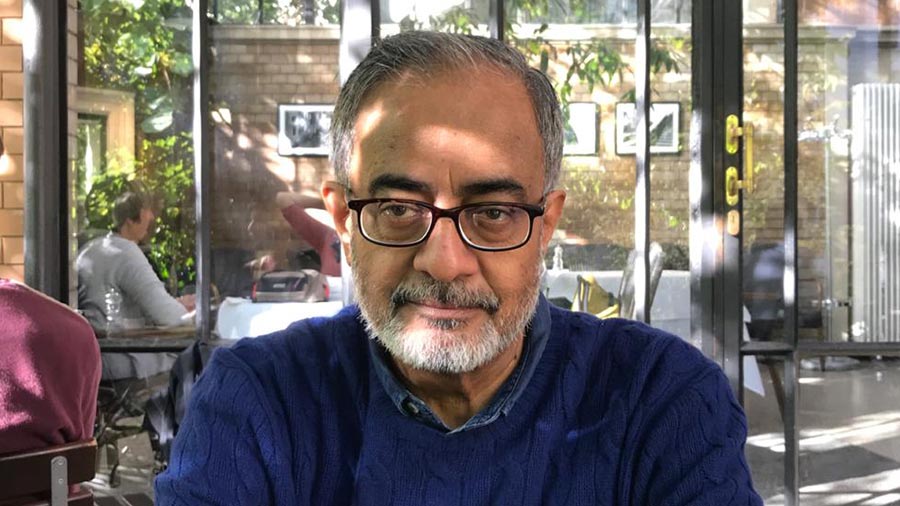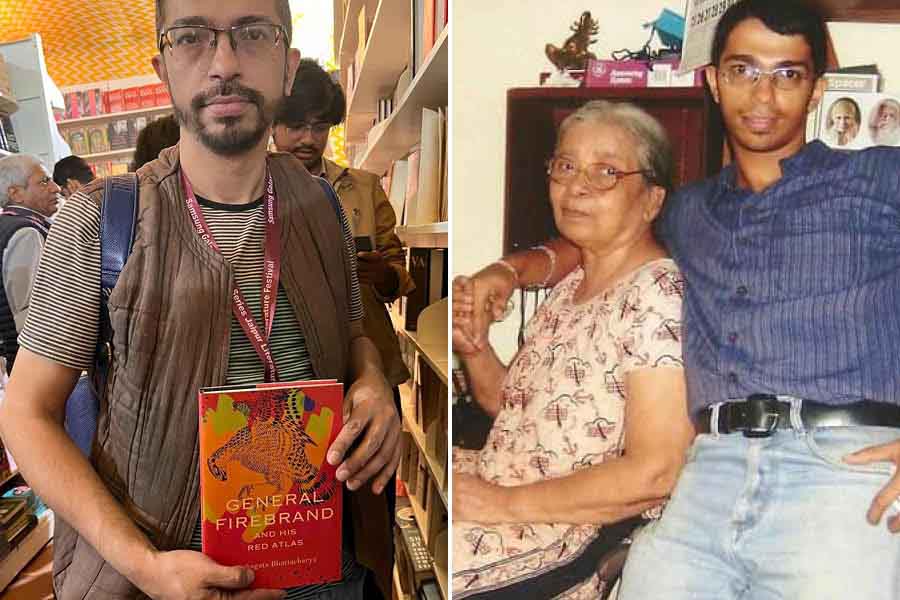A chance participation in a summer workshop at Thema, a publishing house in Kolkata, opened Sunandini Banerjee’s eyes to publishing and design, eventually charting her career path. Her creativity now finds expression in the aesthetic and thought-provoking book covers at Seagull Books, while her eloquent collages adorn the walls of the publishing house on Shyama Prasad Mukherjee Road. An alumnus of the English Department at Jadavpur University, she always thought her calling was in advertising, but little did she know that the future had the role of Senior Editor at Seagull in store for her.
Sunandini met Naveen Kishore (founder of Seagull Books) at one of the masterclasses in Thema. What followed was Sunandini finding a sense of familiarity — almost a homecoming — with Naveen’s design aesthetic. She soon joined Seagull Books as an editorial assistant.
Sunandini has been a voracious reader since her childhood. She also is an avid learner. “I think my design career has been possible because of the freedom at Seagull. And because I came in a time when computers were making digital art not only easier in some ways but also possible for those of us who may not have had ‘real-life’ art skills,” Sunandini said.
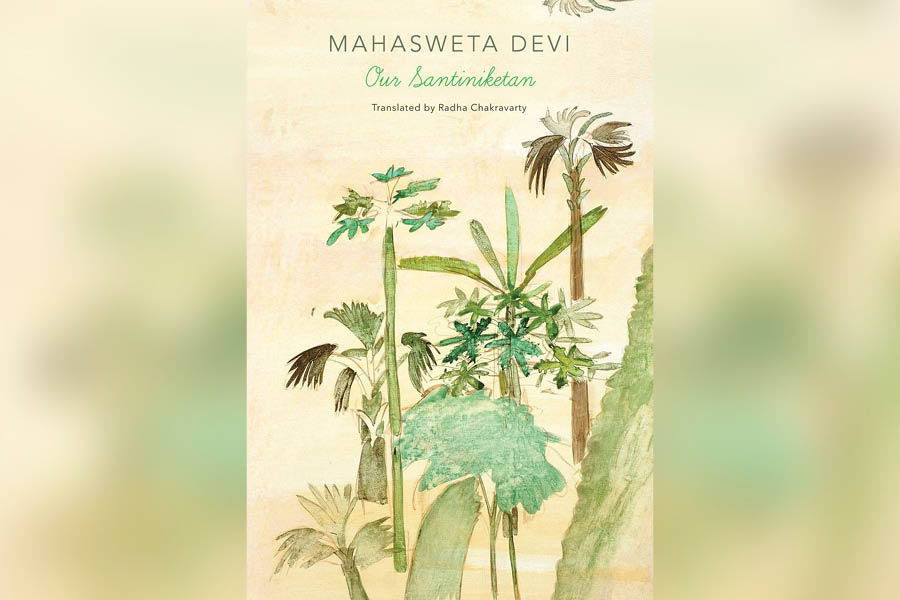
Book cover designed by Sunandini for Mahasweta Devi’s translated work titled ‘Our Santiniketan’ Sunandini Banerjee
‘When I began, a part of my job was to double-check the translations of Mahasweta Devi’s works, and I loved that’
Bibliophile Sunandini Banerjee wasn’t initially drawn to non-fiction, but her workplace was filled with it. As an editorial assistant, she started double-checking the translations of Mahasweta Devi, along with transcribing interviews and proofreading, among other things. Over time, she learnt how to typeset and eventually design book covers. “In time, I was also designing the pages and covers of the Seagull Theatre Quarterly,” Sunandini recalled.
The first major shift for Sunandini came in 2007 when Senior Editor Anjum Katyal decided to leave Seagull Books. By a twist of fate, Sunandini found herself as the senior-most editor. “Naveen looked at me and said, ‘You know, you are next in line’. So, I became the senior editor,” she recalled laughing. Around 2008-09, Naveen passed on the baton of book designing to Sunandini, who has been helming it with utmost artistic fervour ever since.
When not translating or designing book covers, Sunandini also teaches at the Seagull School of Publishing, a transition she made in 2012. “I was very self-conscious and nervous, and that has been quite an experience,” she shared.
‘If you stop the words, my pictures will stop too’
Her portrait as an artist is layered. Her art is intertwined with her literary side, and she believes that her artistic expression and her relationship with literature are interconnected. While Sunandini recognises the artist within herself, she is hesitant to fully embrace the label. “I still don’t think I’m qualified to consider myself an artist,” she reflected, adding, “I’m aware that I’m growing into this persona, especially when working on catalogues and interpreting various texts. Many of my collages can stand alone as art, and they have done so successfully in the few exhibitions I’ve had here and there.”
Whether it’s the book covers or the artworks for her exhibitions, the images emerge naturally for Sunandini, as she doesn't follow a dedicated routine for her art. What she does have is a diverse image bank, shaped by her boundless imagination, reading habits, travels and growing up in India’s diverse culture. “For me, if you stop the words, my pictures will stop too. They are very much interrelated. I read the words, and I respond with a picture. I think that is my final frontier: Can I come up with the pictures even when there are no words to send me soaring? If I could pull that off, then I might say I am also an artist,” she reflected.
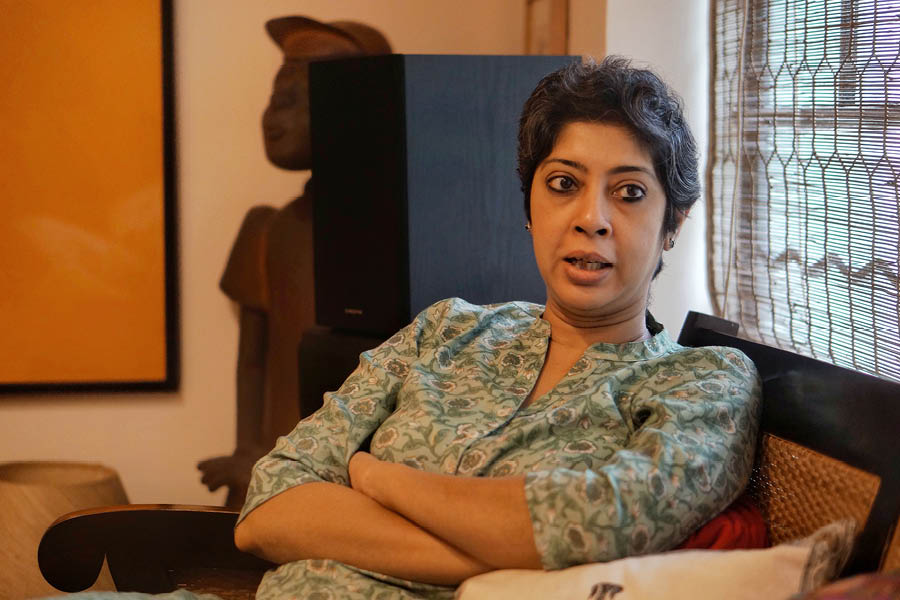
For Sunandini, Seagull Books is her ‘life’s work’ Soumyajit Day
Sunandini enjoys interacting with the audience at her art exhibitions, whether they are familiar with the text that inspired the artworks or not. “These images are open to interpretation by strangers. When I am at one of my exhibitions, the support of the text is absent, which is both exhilarating and frightening,” she shared.
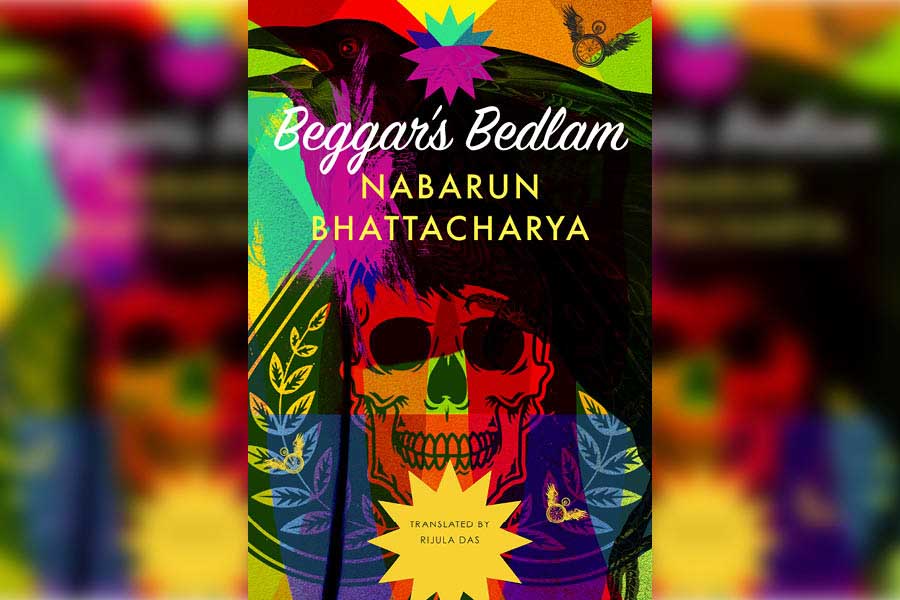
Book cover by Sunandini, the translation ‘Beggar’s Bedlam’ by Nabarun Bhattacharya Sunandini Banerjee
‘I learnt art for a while, but did not quite enjoy it, because it was very structured’
A chat with Sunandini might make you secretly hum the iconic Queen number, I Want to Break Free. Growing up in a family of avid readers and surrounded by a battalion of cousins, the inquisitive Sunandini thrived in a nurturing environment. She also had a habit of visiting libraries and reading rooms. “Sometimes I’d be so engrossed in a book that I’d hide it inside a history textbook. I’d save birthday money to go to the book fair… So, one part of my childhood was a solitary life filled with reading, contemplation and imagination,” she recalled.
But, little Sunandini also had an artist in her. While she didn’t necessarily aim to draw the most perfect human body or landscape, she was eager to learn about different mediums, brush strokes and techniques. “I wanted hands-on knowledge of paint, colour and texture… I studied art for a while, but didn’t quite enjoy it because it was very structured,” she said.
‘It’s a fine line between being intellectually accurate and being aesthetically beautiful’
Sunandini’s dedication to understanding the nuances of art has made her an evocative artist. The book covers she designs for Seagull Books represent authors from around the globe. While she follows a regimented routine of meticulously extracting details from the text and making diligent notes, she also prioritises visual research. “This process is crucial because we’re dealing with texts translated from languages from around the world. They are coming from countries I have never been to, and I have to be very careful to not stereotype that place or get the time period wrong,” Sunandini explained.
She refuses to compromise on her work, whether it’s translating or designing book covers. Sunandini’s approach to cover design is simple and straightforward: “It’s a fine line between being intellectually accurate or contextually correct and being aesthetically beautiful. I pay close attention to each title because many of these writers are entering the English market for the first time and competing with established heavyweights.”
She aims to create books that are so strikingly beautiful that a reader is forced to linger over them for an extra moment. And this has been her mantra for the 800 or 900 covers she has designed so far.

Sunandini’s artistic rendition for ‘Kafka’s Son’ book cover Sunandini Banerjee
For Sunandini, the main challenge is to not repeat herself. She completed 24 years with Seagull Books on August 1 this year, and among the volume of her work, one thing she is particularly mindful of is avoiding repetition. While she primarily works on adult literature, she adheres to two thumb rules for designing for Seagull’s subsection of children’s literature: she avoids dumbing down the visual treatment and steers clear of using the Comic Sans MS font. “From a child’s perspective, you first get the story out of the way, and then you come back to savour every page. I don’t design a book for children very differently from how I design for adults,” she shared.
‘Book-cover art has never gotten the attention it deserves’
“From both a personal and professional perspective, I feel that book-cover art has never received the attention it deserves, except for a very few personalities perhaps, in some countries. It’s not treated as art, though it should be,” said the senior book-cover designer with evident dismay. Sunandini believes there should be national and international awards specifically for this genre of publishing.
‘The essence of translation lies in the voice of the text’
What are you translating? Where is it set? What kind of language is it? What kind of stylistic devices does the author use? Sunandini meets a series of crucial questions everytime she dons the hat of a translator. When she translates Nabarun Bhattacharya, for example, she tries to translate the motley crew of literary devices from Bengali to English — alliterations, popular-culture references, use of metres, or spoofs of Hindi film songs — while also ensuring that the text reads as if Nabarun has written it. Sunandini is not re-telling Nabarun, she is translating him — a distinction she firmly upholds.
“Translation is about taking something (in your mind) in one language and bringing it into another language as completely as possible. Yes, there will be losses, always and without doubt. But the voice has to be as close to the original as possible. None of my translations should sound like me,” Sunandini explained.
Translation studies hold great importance for her because, in today’s world, translation is a key area of culture. It facilitates understanding people from various parts of the globe. “The more you read of other worlds and other peoples, you realise in a wonderful kind of way that we’re all trapped in various levels of the human condition, and we’re all talking about the same love, the same grief,” said Sunandini.
‘When a poem is ready to emerge, it will’
A lesser-known fact about Sunandini is that she is also a poet, who, according to her, is currently hibernating in Tibet with the Yeti and has not seen the light of day for a long time.
On a serious note, the multi-faceted artist is navigating a personal period of grief. “Something has shifted in me after my mother passed away, leading me to consider — oddly enough — the idea of writing poetry in Bangla. Kichu ekta hoyeche okhaney, possibly with the mother tongue connected to the mother, or some other deeply Freudian mishmash,” Sunandini shared.
Sunandini believes that when a poem is ready to emerge, it will. “I think I am letting them stew for now. I want them to be a little more fully formed before I set them free,” she signed off.

